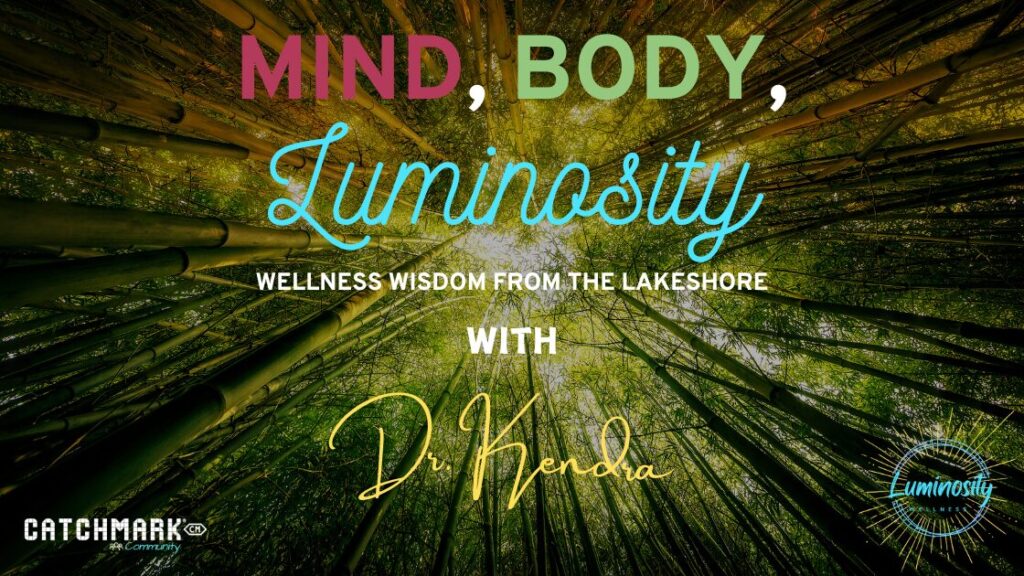
Watch Mind, Body, Luminosity: Wellness Wisdom From the Lakeshore Podcast – S1E10
As we strive to achieve optimal health and wellness, few factors are as influential and transformative as movement and mindset. From the physical benefits of exercise to the profound impact of a positive mindset, integrating movement and mindset work into our daily lives can unlock a wealth of benefits for our overall well-being. When undertaking a journey to improve overall health and wellness, the importance of movement and exercise, and the critical role of mindset in achieving health goals cannot be understated. Let’s explore some practical strategies for integrating both into our lives for lasting transformation.
Understanding the Importance of Movement and Exercise
Movement and exercise are fundamental pillars of health and wellness, playing a crucial role in supporting physical, mental, and emotional well-being. Regular physical activity offers a myriad of benefits, including:
- Improved Cardiovascular Health: Exercise strengthens the heart and improves circulation, reducing the risk of cardiovascular disease and promoting overall heart health.
- Enhanced Muscle Strength and Endurance: Regular exercise helps build and maintain muscle mass, increasing strength, endurance, and functional capacity.
- Weight Management: Physical activity helps burn calories and maintain a healthy weight, reducing the risk of obesity and associated health conditions.
- Stress Reduction: Exercise releases endorphins, neurotransmitters that promote feelings of happiness and well-being, and reduces levels of cortisol, the body’s stress hormone.
- Improved Mental Health: Regular physical activity has been shown to reduce symptoms of anxiety, depression, and other mental health disorders, promoting better mood and emotional resilience.
Exploring Different Types of Movement for Exercise
When it comes to exercise, variety is key. Incorporating a mix of cardiovascular, strength training, flexibility, and balance exercises into your routine can help maximize the benefits and keep workouts engaging and enjoyable. Some popular forms of exercise include:
- Cardiovascular Exercise: Activities such as walking, running, cycling, swimming, and dancing that elevate the heart rate and improve cardiovascular fitness.
- Strength Training: Resistance exercises using weights, resistance bands, or bodyweight that build muscle strength and endurance.
- Flexibility Training: Stretching exercises that improve flexibility, range of motion, and joint mobility, such as yoga or Pilates.
- Balance Training: Exercises that challenge balance and coordination, such as tai chi or balance drills, to reduce the risk of falls and improve stability.
Recommended Exercise Amounts for Different Age Groups and Genders
The American Heart Association and other health organizations recommend the following guidelines for physical activity:
- Adults: Aim for at least 150 minutes of moderate-intensity aerobic activity or 75 minutes of vigorous-intensity aerobic activity per week, along with two or more days of strength training exercises targeting major muscle groups.
- Children and Adolescents: Children and adolescents should engage in at least 60 minutes of moderate-to-vigorous physical activity each day, including aerobic and muscle-strengthening activities.
- Older Adults: Older adults should strive for the same amount of exercise as adults, with an emphasis on activities that improve balance and flexibility to reduce the risk of falls and maintain mobility.
Getting Started on a New Exercise Routine: Small Steps, Big Impact
Starting a new exercise routine can feel daunting, but it’s essential to start small and build momentum over time. Here are some tips for getting started:
- Set Realistic Goals: Start with achievable goals that align with your current fitness level and lifestyle. Break larger goals into smaller, manageable steps to build confidence and momentum.
- Find Activities You Enjoy: Choose activities that you genuinely enjoy and look forward to. Whether it’s walking, swimming, dancing, or gardening, find activities that bring you joy and make exercise feel like a reward, not a chore.
- Prioritize Consistency: Consistency is key to building a sustainable exercise routine. Aim to exercise regularly, even if it’s just for a few minutes each day. Consistent effort over time yields significant results.
- Listen to Your Body: Pay attention to how your body responds to exercise and adjust your routine accordingly. Take rest days when needed, and don’t push through pain or discomfort. Honor your body’s signals and practice self-care.
The Power of Mindset: Cultivating a Positive Outlook for Success
While physical activity is essential for health and wellness, mindset plays an equally critical role in achieving our health goals. A positive mindset can fuel motivation, resilience, and perseverance, making it easier to overcome obstacles and stay committed to our wellness journey. Here are some strategies for cultivating a positive mindset:
- Practice Gratitude: Cultivate gratitude for your body’s capabilities and the opportunity to engage in physical activity. Focus on what you can do rather than what you can’t, and celebrate your progress along the way.
- Visualize Success: Visualize yourself achieving your health and fitness goals, imagining how it will feel to be stronger, healthier, and more vibrant. Use visualization techniques to reinforce your commitment and stay focused on your goals.
- Challenge Limiting Beliefs: Identify and challenge any negative or limiting beliefs that may be holding you back from reaching your full potential. Replace self-doubt with self-compassion and affirmations that empower and uplift you.
- Surround Yourself with Support: Build a supportive network of friends, family, or a health coach who can cheer you on, offer encouragement, and hold you accountable to your goals. Share your journey with others and draw strength from their support.
Seeking Support on Your Wellness Journey
As you embark on your journey toward greater health and wellness, remember that you don’t have to go it alone. Whether you’re looking to establish a new exercise routine, cultivate a positive mindset, or address any barriers to success, having a supportive team by your side can make all the difference. Consider working with a qualified health coach, personal trainer, or wellness professional who can provide guidance, accountability, and personalized support tailored to your unique needs and goals.
Empowering Health Through Movement and Mindset
The integration of movement and mindset work is essential for achieving optimal health and wellness. By prioritizing regular physical activity, embracing a positive mindset, and seeking support when needed, we can harness the transformative power of movement and mindset to elevate our health, vitality, and overall well-being. Let’s commit to taking small, intentional steps toward greater health and happiness each day, knowing that every positive choice we make brings us one step closer to our wellness goals.
Meet Dr. Kendra, a leading voice in holistic health and natural wellness. With a background as adjunct faculty at Bastyr University, renowned for its naturopathic medicine programs, she brings a wealth of expertise to her practice. As a respected speaker, Dr. Kendra has graced the stages of various health and wellness expos, captivating audiences with her insights into holistic health, especially the transformative power of light therapy. Her commitment to education shines through in the seminars she offers, both locally and online, empowering individuals to take charge of their well-being. Beyond her clinical work and educational initiatives, Dr. Kendra is a community builder, hosting engaging gatherings that foster connections and promote holistic wellness. Her mission is to guide individuals on their journey to vibrant health and happiness, making her a trusted source of inspiration and expertise in the field.
Must See
-


Community
/ 2 days agoHunters and Anglers: Urban Deer Hunting in Whitehall and Montague
WHITEHALL & MONTAGUE, MI — As deer populations continue to rise across West Michigan,...
By Kara Raeth -


Community
/ 2 days agoStay Safe This Summer on Lake Michigan and White Lake
As summer heats up in the White Lake area, more people are heading to...
By Kara Raeth -


History
/ 3 days agoWhite Lake History – Parades Through Time
The Tradition of Parades Parades have been a part of human celebration for thousands...
By Owen Raeth












